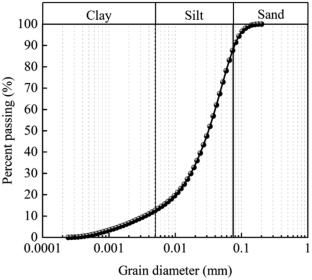Desiccation-induced cracking and deformation characteristics in compacted loess: insights from electrical resistivity and microstructure analysis
Abstract
Compacted loess is widely used in construction and road engineering in the Loess Plateau region. It inevitably undergoes vertical deformation and desiccation-induced cracking due to environmental effects. This study investigates the deformation and cracking characteristics of compacted loess under vertical pressure during desiccation. Samples with initial water contents ranging from 5% to saturation are prepared for desiccation under vertical stresses of 0−100 kPa. Changes in resistivity are simultaneously monitored during desiccation. After desiccation, the microstructural characteristics of the soil are examined using X-ray computed tomography (CT), mercury intrusion porosimetry (MIP), and scanning electron microscopy (SEM) techniques. The effects of initial water content and vertical pressure on vertical strain, drying cracks, and electrical resistivity of compacted loess are analyzed. The results indicated that high vertical pressure and water content lead to significant compressive and desiccated deformation of compacted loess, which is reflected in the microstructure by a smaller pore size distribution (PSD). Lower initial water content and higher vertical load are more effective in suppressing cracking during the desiccation of compacted loess. The surface crack ratio (Rsc) of compacted loess is reduced by 99.54% as pressure increases from 0 to 100 kPa and water content decreases from saturation to 5%. The directions of cracks in loess during desiccation and the microstructural changes caused by deformation are effectively characterized by resistivity measurements. This study explores the variations in mechanical properties during desiccation of compacted loess and provides a theoretical foundation to use resistivity for characterization.


 求助内容:
求助内容: 应助结果提醒方式:
应助结果提醒方式:


